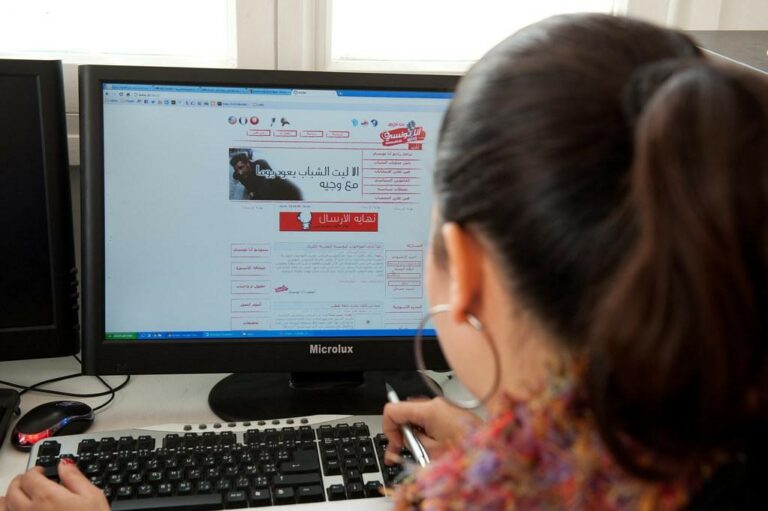Effective Use of Remote Monitoring in Businesses

It is essential to be aware of how to make the most out of a newly adopted business tool like remote monitoring software. This ensures that the tool functions exactly how it has been intended to. So, how do you effectively use remote monitoring software?
In order to effectively use monitoring software in businesses, companies must focus on improving productivity through positive feedback and support and limit the invasiveness of the monitoring.
Read below as we describe in detail what effective use of remote monitoring entails.
How to Effectively Use Remote Monitoring for Businesses?

Following are some ways you can effectively use remote monitoring for businesses:
Team Building & Collaboration
One of the main challenges of a remote work setting is the lack of team spirit and collaboration. It may be due to the lack of face-to-face contact or because different employees may belong to different time zones, making it hard to keep track of each other’s work.
However, this problem can be significantly mitigated by remote monitoring. Workers can easily view each other’s progress and pick up right from where the others left off. In addition, workers can identify where their teammates are lacking and provide appropriate support.
Training
Monitoring software provides employers with ample opportunities to provide positive support and growth for their teams.
Data gathered by the monitoring software can help employers spot areas where employees could benefit from additional training. They can also encourage staff to participate in professional development activities and/or implement training programs.
Constructive Feedback
Monitoring software can provide employers with a wealth of information about the specifics of how their team is doing. Using the acquired information, employers should have regular feedback sessions to discuss performance.
Give them helpful criticism on their strong points as well as their weaker spots. Providing feedback backed by concrete examples and data from the monitoring program can help employees understand exactly what they need to work on.
SMART Goals
SMART goals are all about setting goals that are Specific, Measurable, Achievable, Relevant, and Time-bound. Using this approach makes setting goals clearer and more effective.
If you want to set SMART goals, employee tracking software can help you collect, analyze, and make sense of data to assist with the goal-setting process.
It guarantees that goals are aligned with organizational relevance, is realistically achievable given past performance, presents a factual basis for establishing precise and quantifiable objectives, and supports the formation of time-bound deadlines.
Designated Monitoring Hours
As a general rule, it is advisable to observe user behavior only during business hours. If your policy permits them to watch Netflix after work or surf Instagram during their lunch break, make sure the technology permits them to do so without triggering any alerts.
There is employee tracking software that lets employees punch in and exit on their own time so they can control when they are or are not being monitored. Other software programs can be set up to monitor activity at predetermined hours.
Transparency
Transparency is crucial in any organization, especially when the company chooses to implement technology that impacts every person during every hour of the workday.
Implementing employee monitoring without first informing staff members can prove to be harmful to the company’s transparency process and develop mistrust among employees.
The best way to prevent any unintended consequences is to hold a meeting with the entire staff and have HR outline the benefits and drawbacks of the system you intend to implement.
Educate your staff thoroughly about the software and the benefits of employee monitoring. Clarify how the software monitors people, the many types of data it gathers, whether it is legal, and the different scenarios in which the data obtained by the monitoring system can and cannot be used.
Make sure workers know they may talk to HR about issues they feel are unfair or illegal. If you are open and honest with your staff about the implementation and use of a monitoring system, you can increase the likelihood that they will embrace it quickly.
Minimal Invasiveness
An employee monitoring plan that prioritizes privacy keeps tabs on only the data that is strictly necessary to achieve the goal at hand.
For instance, if the goal is to ensure that employees adhere to specified acceptable use policies, then this objective can be easily attained by the monitoring of employee activities on the Internet. It would be excessively intrusive to record camera feeds or monitor keystrokes in such a situation.
Defined Purpose
Employers need a clear rationale for collecting employee data in order to make good decisions about what data to gather and how to utilize it.
Tools for monitoring employees can be put to use for a wide variety of purposes, including keeping tabs on how hard employees are working, recording where they are working from, keeping corporate devices safe from misuse, monitoring employee attendance, and even spotting potential insider threats.
How to Introduce Remote Monitoring

Any business, regardless of size, could benefit from using an employee monitoring system to deal with productivity, security, and insider threat challenges. Consider adopting the following key practices to facilitate the change throughout your organization:
Get Leadership On Board
As with any other change in the company, it’s important to get the support of key leaders as soon as possible in order to help everyone in the company accept the change.
Once the software has been decided, inform the senior executives and upper management to help them understand the problems that will be addressed through its implementation.
Develop a Computer Use Policy
By having all employees sign on a computer use policy, you can rest assured that everyone in the organization is on the same page about how they should be using corporate resources.
Train Managers
Prepare your upper management team by teaching them the ins and outs of the employee monitoring system. It’s also important to equip management with the resources they need to educate and involve their teams in the software. Consider generating a slide presentation or small video for them to view that will demonstrate the employee advantages of monitoring.
Collect Feedback
During the first nine to twelve months of the implementation, it is important to schedule periodic meetings with managers in order to collect feedback and work on developing solutions to resolve concerns as they come up.
Conclusion
Introducing and effectively using remote monitoring software in your business can be challenging. But once you get the hang of it, it can lead your business to success through increased productivity.